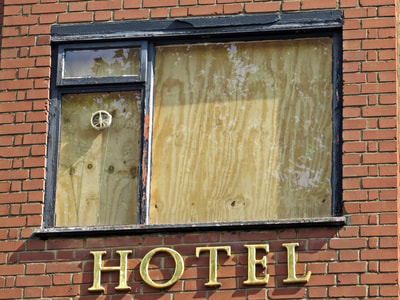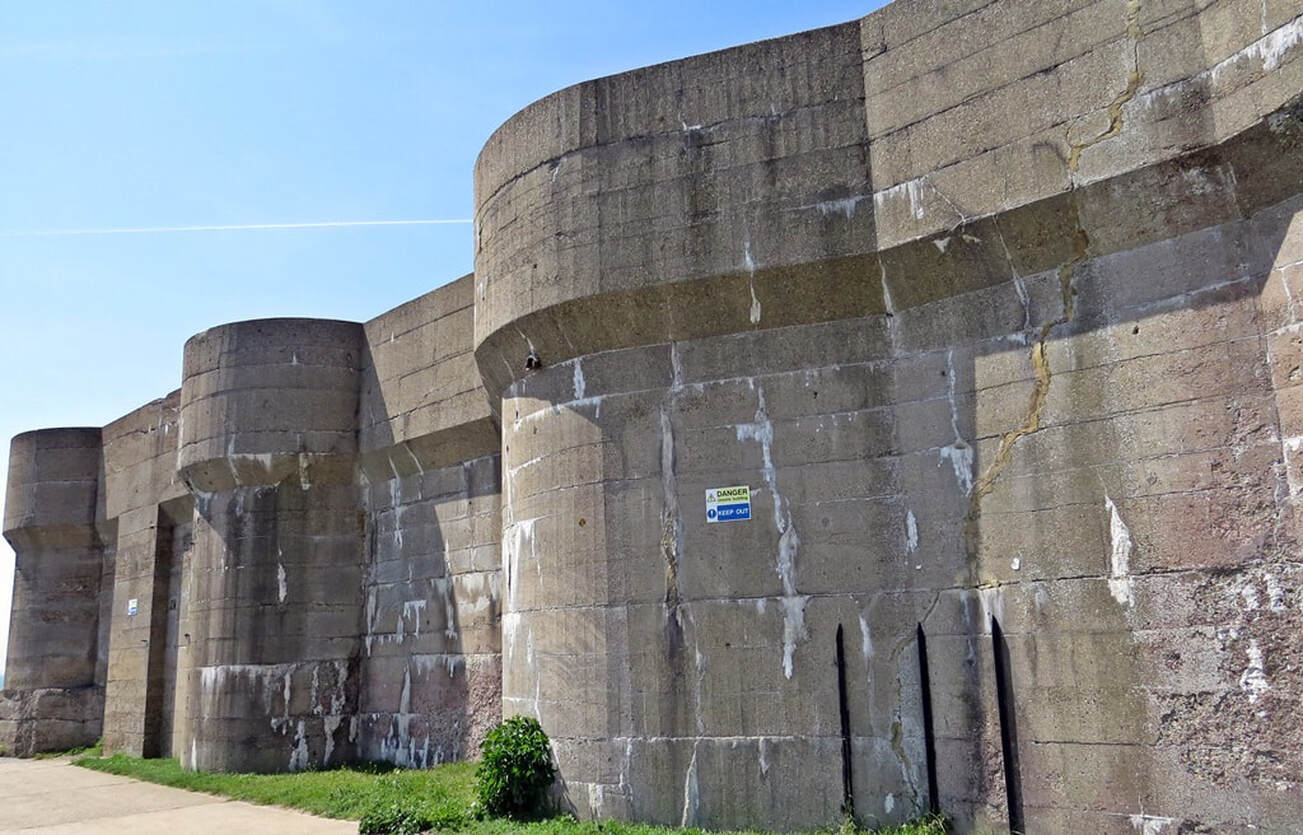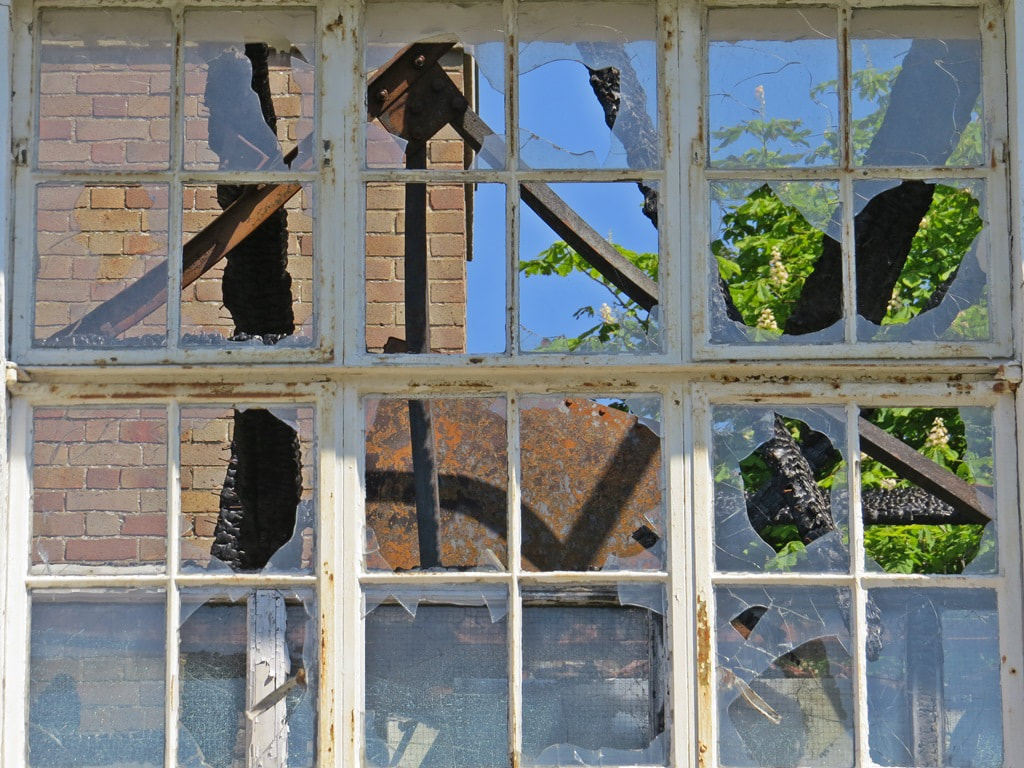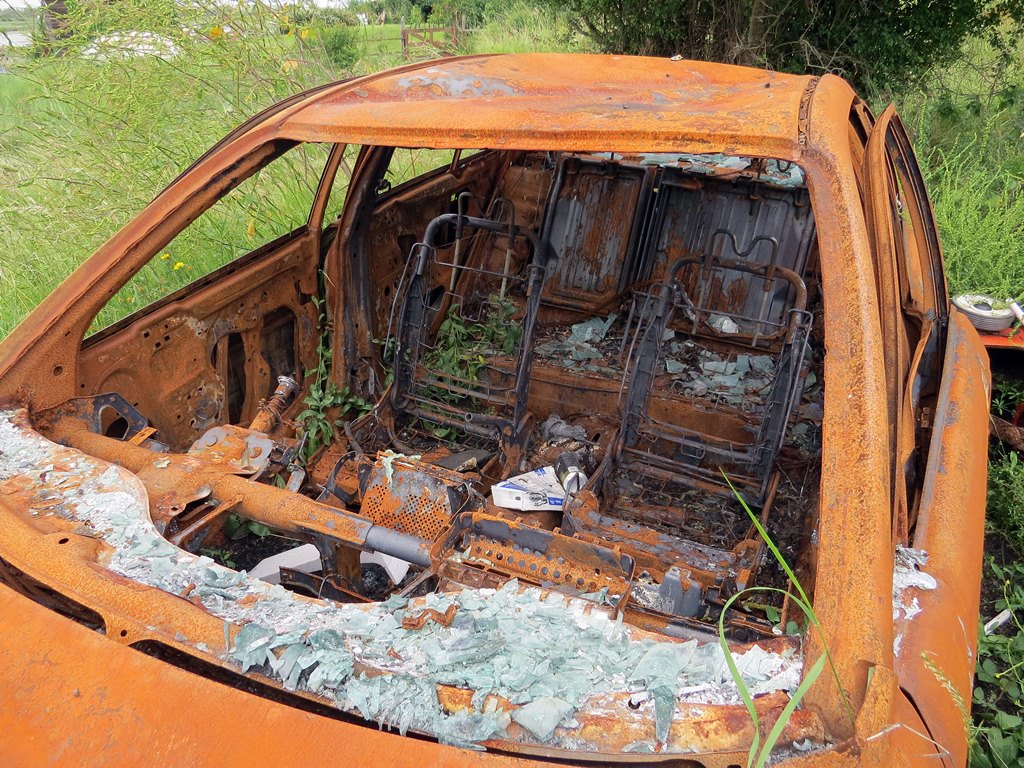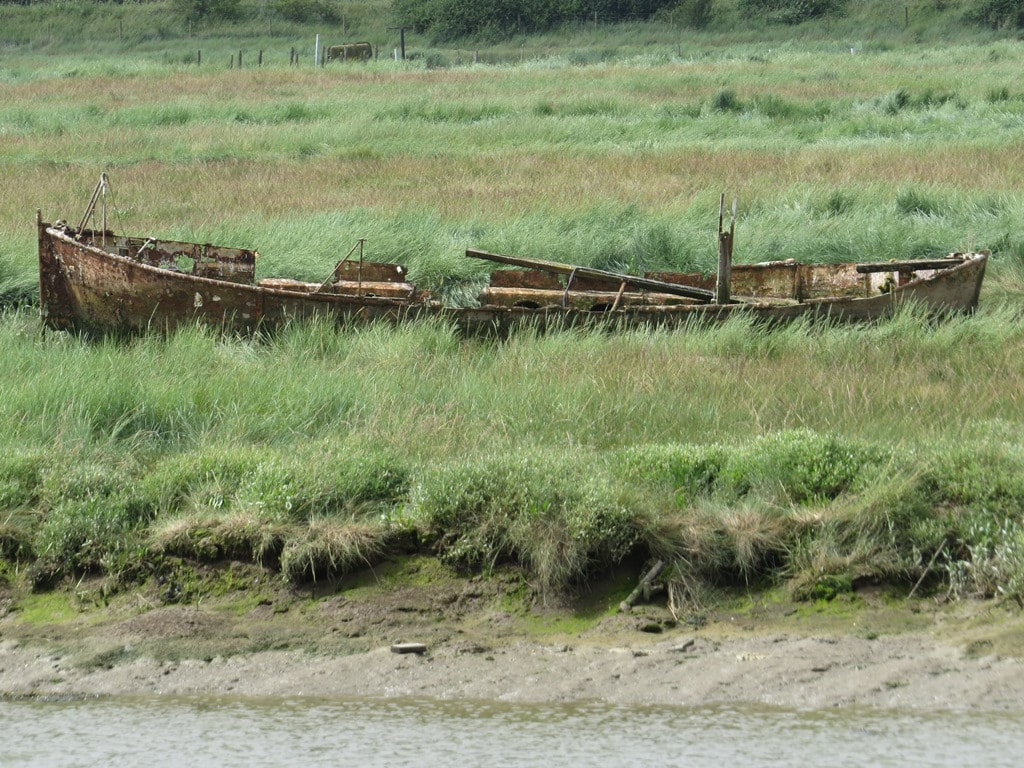Derelict Essex SS postcodes (Southend, Shoeburyness, Canvey Island & Benfleet)
Southend-on-Sea, SS1
Commonly referred to as simply Southend is 40 miles east of central London. Southend-on-Sea is a bit of a misnomer, as technically it’s “Southend-on-Thames”, as the town is situated at the mouth of the Thames Estuary, with a view of the Kent coast.
Southend's status of a seaside resort grew after a visit from Princess Caroline of Brunswick (Princess of Wales from 1795 to 1820) and Southend Pier was constructed - the longest leisure pier in the world. From the 1960s onwards, the town declined as a holiday destination, redeveloped itself as the home of the Access credit card, due to it having one of the UK's first electronic telephone exchanges. And much of the town centre was developed for commerce and retail, and many original structures were lost to redevelopment. However, about 6.4 million tourists still visit Southend per year.
Bands and musicians originating from Southend include Busted, Danielle Dax, Eddie and the Hot Rods,The Horrors, The Kursaal Flyers and Procol Harum
Southend's status of a seaside resort grew after a visit from Princess Caroline of Brunswick (Princess of Wales from 1795 to 1820) and Southend Pier was constructed - the longest leisure pier in the world. From the 1960s onwards, the town declined as a holiday destination, redeveloped itself as the home of the Access credit card, due to it having one of the UK's first electronic telephone exchanges. And much of the town centre was developed for commerce and retail, and many original structures were lost to redevelopment. However, about 6.4 million tourists still visit Southend per year.
Bands and musicians originating from Southend include Busted, Danielle Dax, Eddie and the Hot Rods,The Horrors, The Kursaal Flyers and Procol Harum
Southend, SS1- Grosvenor Rock Factory
This empty former Methodist church building in Pleasant Road was for many years the factory of Grosvenor Confectionery run by a successful seaside rock-making family.
'What with health awareness and Brussels, the once sunny world of British seaside rock-making has become a greyer place' wrote Management Today magazine in 1996. Grosvenor diversified into other hard candy specialities - a range of lollipops including a naked lady, rock that resembles a cigarette and bespoke rock produced as a PR give-away for Lotus, Legal & General and the Queen fan club - the group, not Her Majesty. The factory eventually closed down in the early 2000s and the building suffered a massive fire in 2008 with flames shooting as much as 20 feet into the air taking 30 firefighters 3 hours to extinguish. Another fire occurred in 2016 when the derelict building that was full of old arcade machines.
'What with health awareness and Brussels, the once sunny world of British seaside rock-making has become a greyer place' wrote Management Today magazine in 1996. Grosvenor diversified into other hard candy specialities - a range of lollipops including a naked lady, rock that resembles a cigarette and bespoke rock produced as a PR give-away for Lotus, Legal & General and the Queen fan club - the group, not Her Majesty. The factory eventually closed down in the early 2000s and the building suffered a massive fire in 2008 with flames shooting as much as 20 feet into the air taking 30 firefighters 3 hours to extinguish. Another fire occurred in 2016 when the derelict building that was full of old arcade machines.
Ian writes to Derelict London: Hi Paul, I just wanted to say what a great site yours is. I've been a massive fan of it over the years and was pleasantly surprised to see photos of Southend (I live in Leigh on Sea) so they are very familiar to me. The pictures of the old rock factory in Pleasant Road are especially relevant to me as my father worked there through all his working life until he died in 1997. I worked there during the summer of 1978 in the school holidays to enable me to buy my first moped. Keep up the good work.
Shoeburyness, SS3
Shoeburyness is a town in SE Essex at the eastern end of the A13 at the mouth of the Thames Estuary. It is within the borough of Southend-on-Sea around 3 miles east of Southend town centre.It was once a garrison town and still acts as host to MoD Shoeburyness.
the beach is the site of a defence boom, built in 1944, to prevent enemy shipping and submarines from accessing the River Thames.The majority of the boom was dismantled after the war, but around one mile still remains, stretching out into the Thames Estuary.
the beach is the site of a defence boom, built in 1944, to prevent enemy shipping and submarines from accessing the River Thames.The majority of the boom was dismantled after the war, but around one mile still remains, stretching out into the Thames Estuary.
Shoeburyness, SS3 - Heavy Quick Firing Battery
The Heavy Quick Firing Battery was built in 1899 as a coast artillery training facility, Two 6 inch and two 4.7 inch quick firing guns were mounted on the top of the building
Shoeburyness, SS3 - Experimental Casemate
Built in 1872-3, this casemate (a fortified gun emplacement where the gun is inside pointing out to sea shooting out through an embrasure (opening)
The guns used here were a 12.5 inch 38 ton and a 12 inch 25 ton Rifle Muzzle Loading gun. Their purpose was for coastal defence experimenting to develop a casemate for operational use
The guns used here were a 12.5 inch 38 ton and a 12 inch 25 ton Rifle Muzzle Loading gun. Their purpose was for coastal defence experimenting to develop a casemate for operational use
Shoeburyness, SS3 - Shoebury Hospital
This former hospital in Ness Road,originally built as a pre-war convalescent home, was last used for non-residential specialist health care until 2013. In June 2018, a planning application was submitted to Southend Council in a bid to demolish the derelict site and replace it with ten new homes. In August 2018 seven fire crews tackled a blaze here caused by arsonists damaging 50% of the building's roof and the floors below. The planning application for demolision has since been given the go ahead.
South Benfleet, SS7
South Benfleet is a small town directly north of Canvey Island.
The name of the town originates from the time of the Saxon settlers in the 5th Century, when the area was largely marshland. They named the area Beamfleote, meaning "tree stream", being the area where the creeks from the River Thames adjoined the wooded area to the north. These photographs of a burnt out cars and redundant boats were taken alongside Benfleet Creek.
The name of the town originates from the time of the Saxon settlers in the 5th Century, when the area was largely marshland. They named the area Beamfleote, meaning "tree stream", being the area where the creeks from the River Thames adjoined the wooded area to the north. These photographs of a burnt out cars and redundant boats were taken alongside Benfleet Creek.
Canvey Island, SS8
Canvey Island is a reclaimed island in the Thames estuary. It is separated from the mainland of south Essex by a network of creeks. Lying only just above sea level it has a history of flooding at exceptional tides - a flood of 1953 devastated the island, killing 58 islanders.It has since been protected by modern sea defences comprising 2 miles of concrete sea walls.. The drainage system consists of sewers, culverts, natural and artificial dykes and lakes which feed seven pumping stations and gravity sluices that discharge the water into the Thames and creeks.
The island became the fastest growing seaside resort in Britain between 1911 and 1951. There is a holiday camp and 'seafront' with a small amusement park, while much of the island is mainly farmland, marshes and industrial areas.
Canvey Island is also notable for its relationship to the petrochemical industry. The island was the site of the first delivery in the world of liquefied natural gas by container ship, and later became the subject of an influential assessment on the risks to a population living within the vicinity of petrochemical shipping and storage facilities.
The island became the fastest growing seaside resort in Britain between 1911 and 1951. There is a holiday camp and 'seafront' with a small amusement park, while much of the island is mainly farmland, marshes and industrial areas.
Canvey Island is also notable for its relationship to the petrochemical industry. The island was the site of the first delivery in the world of liquefied natural gas by container ship, and later became the subject of an influential assessment on the risks to a population living within the vicinity of petrochemical shipping and storage facilities.
Canvey Island, SS8 - Occidental Refinery
Down by the jetty....
In 1970 Occidental Refineries Limited, a subsidiary of a US Corporation, applied to build an oil refinery on a marshland site on Canvey Island.This jetty, almost a mile in length, was built with the intention of pumping crude oil from ships into oil refinery. Crude oil storage capacity at the refinery was 3.75 million barrels in ten floating roof tanks (220ft in diameter and 56ft high) together with 160,000 barrels of ship ballast water storage. There was a massive concrete chimney for the furnaces.
Construction work stopped in 1975 when after having invested £55 million research predicted that the proposed refinery was unlikely to be profitable due to the Middle East oil crisis when the price of oil increased increased fivefold since 1970 and the consequent slump in demand for petroleum products. The project went into abeyance and local residents formed the Refinery Resistance Group which campaigned to stop hazardous industrial developments. No further work was undertaken on the refinery site.
The unused tanks and chimney were demolished by 1997 leaving just this jetty and the concrete foundations of the tanks. Part of the refinery site is now Canvey Wick nature reserve designated a Site of Special Scientific Interest (SSSI) in 2005.
Nearby to the jetty is the The Lobster Smack, a grade II listed pub dating back to the 17th century. The pub was known to Charles Dickens who mentioned it in Great Expectations. Down by the Jetty (1975) was the legendary debut album by Canvey Island pub rockers Dr. Feelgood. The cover shot was taken outside the pub at the beach with the jetty in the background.
In 1970 Occidental Refineries Limited, a subsidiary of a US Corporation, applied to build an oil refinery on a marshland site on Canvey Island.This jetty, almost a mile in length, was built with the intention of pumping crude oil from ships into oil refinery. Crude oil storage capacity at the refinery was 3.75 million barrels in ten floating roof tanks (220ft in diameter and 56ft high) together with 160,000 barrels of ship ballast water storage. There was a massive concrete chimney for the furnaces.
Construction work stopped in 1975 when after having invested £55 million research predicted that the proposed refinery was unlikely to be profitable due to the Middle East oil crisis when the price of oil increased increased fivefold since 1970 and the consequent slump in demand for petroleum products. The project went into abeyance and local residents formed the Refinery Resistance Group which campaigned to stop hazardous industrial developments. No further work was undertaken on the refinery site.
The unused tanks and chimney were demolished by 1997 leaving just this jetty and the concrete foundations of the tanks. Part of the refinery site is now Canvey Wick nature reserve designated a Site of Special Scientific Interest (SSSI) in 2005.
Nearby to the jetty is the The Lobster Smack, a grade II listed pub dating back to the 17th century. The pub was known to Charles Dickens who mentioned it in Great Expectations. Down by the Jetty (1975) was the legendary debut album by Canvey Island pub rockers Dr. Feelgood. The cover shot was taken outside the pub at the beach with the jetty in the background.
Click for other Derelict Essex pages:
RM postcodes - Purfleet, West Thurrock and Grays
CO postcodes - CO postcodes - Clacton-on-Sea, Jaywick and Walton-on-the-Naze
RM postcodes - Purfleet, West Thurrock and Grays
CO postcodes - CO postcodes - Clacton-on-Sea, Jaywick and Walton-on-the-Naze
Paul Talling's Derelict London - all photographs are copyright © 2003-2024
Click the envelope icon to join the mailing list for occasional news on website updates, new book releases and Paul's guided walking tours. Follow Derelict London on Facebook and Twitter
Please do not contact me with property/ filming/photo shoot location queries
Click the envelope icon to join the mailing list for occasional news on website updates, new book releases and Paul's guided walking tours. Follow Derelict London on Facebook and Twitter
Please do not contact me with property/ filming/photo shoot location queries



